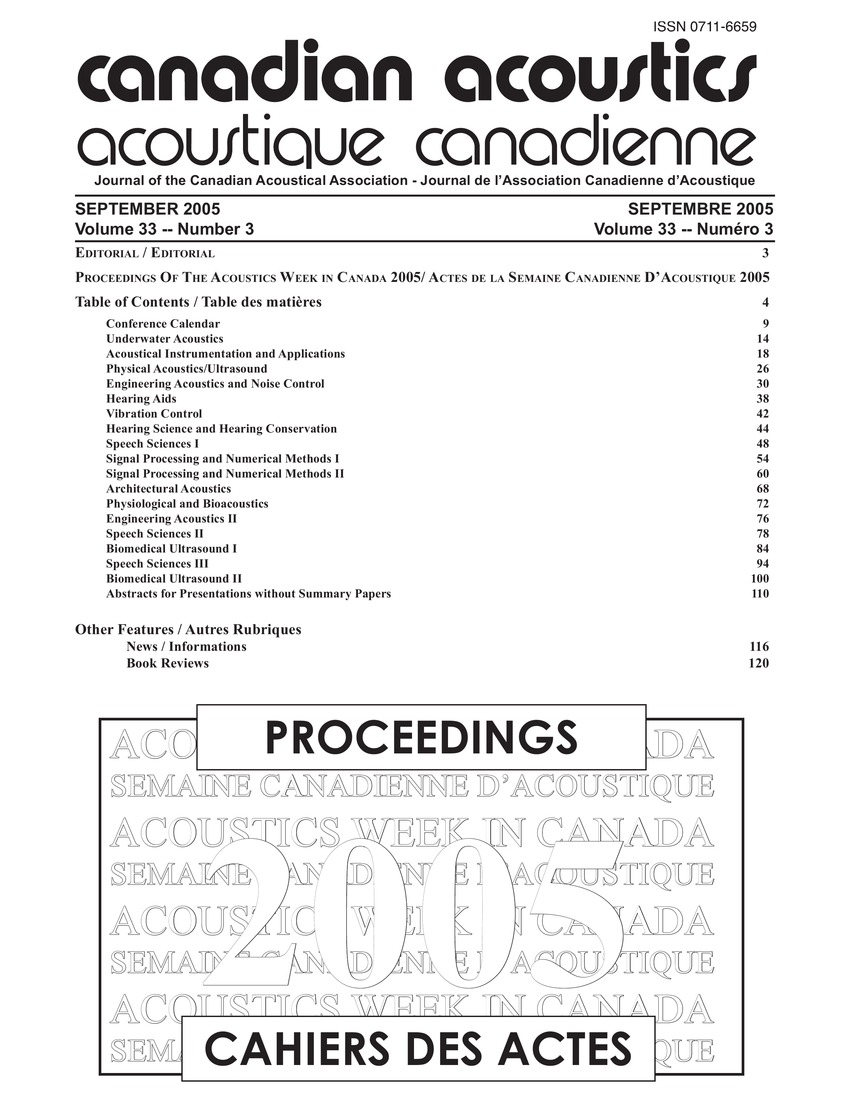Use of psychoacoustic metrics for the analysis of next generation computer cooling fan noise
Keywords:
Acoustic emissions, Acoustic fields, Fans, Pressure effects, Visualization, Psychoacoustic metrics, Psychoacoustics, Quality of sound, Sound quality metricsAbstract
The validity of using several psychoacoustic metrics for acoustic analysis of two different cooling solutions was investigated. Psychoacoustics involves the quantitative evaluation of subjective sensations using sound quality metrics. Applying sound quality metrics allow the visualization of the complicated relationship between the physical and perceptual acoustic quantities. Testing of both the sound pressure level and sound power level results indicate a linear increase in acoustic emission levels. Traditional analytical approaches also quantify the amplitude of acoustic emissions, but offer no idea of the quality of sound produced.Additional Files
Published
How to Cite
Issue
Section
License
Author Licensing Addendum
This Licensing Addendum ("Addendum") is entered into between the undersigned Author(s) and Canadian Acoustics journal published by the Canadian Acoustical Association (hereinafter referred to as the "Publisher"). The Author(s) and the Publisher agree as follows:
-
Retained Rights: The Author(s) retain(s) the following rights:
- The right to reproduce, distribute, and publicly display the Work on the Author's personal website or the website of the Author's institution.
- The right to use the Work in the Author's teaching activities and presentations.
- The right to include the Work in a compilation for the Author's personal use, not for sale.
-
Grant of License: The Author(s) grant(s) to the Publisher a worldwide exclusive license to publish, reproduce, distribute, and display the Work in Canadian Acoustics and any other formats and media deemed appropriate by the Publisher.
-
Attribution: The Publisher agrees to include proper attribution to the Author(s) in all publications and reproductions of the Work.
-
No Conflict: This Addendum is intended to be in harmony with, and not in conflict with, the terms and conditions of the original agreement entered into between the Author(s) and the Publisher.
-
Copyright Clause: Copyright on articles is held by the Author(s). The corresponding Author has the right to grant on behalf of all Authors and does grant on behalf of all Authors, a worldwide exclusive license to the Publisher and its licensees in perpetuity, in all forms, formats, and media (whether known now or created in the future), including but not limited to the rights to publish, reproduce, distribute, display, store, translate, create adaptations, reprints, include within collections, and create summaries, extracts, and/or abstracts of the Contribution.


